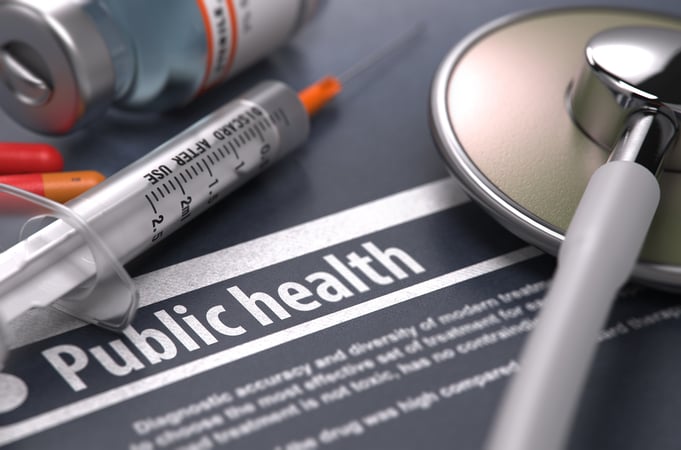The Medical Devices Coordination Group (MDCG) has published guidance discussing the health institution exemption (HIE) introduced by Article 5(5) of both the EU MDR and IVDR. The guidance provides clarity on the applicability of the HIE for health institutions (hospitals, clinics, infirmaries, etc.) who are designing, manufacturing, modifying and using in-house devices. The guidance will also foster a harmonised approach by national competent authorities towards the regulation of in-house devices across the EU.
Background
Article 5(5) of both the EU MDR and IVDR set out an exemption for devices manufactured and used only within health institutions (known as in-house devices). The HIE means that, with the exception of the Annex I general safety and performance requirements (GSPRs), the EU medical device regulations do not apply to such devices. It enables the use of in-house devices manufactured on a non-industrial scale to address specific needs of particular patient groups. Requiring such devices to go through the full regulatory process would create an unfair burden in light of their limited target market and conditions of use.
What is a health institution?
Health institutions are “organisations, the primary purpose of which is the care or treatment of patients or the promotion of health”.[1] The term explicitly includes organisations such as hospitals, laboratories, public health institutes that support the healthcare system. However, it does not cover organisations such as gyms, spas, fitness centres, etc. It also does not cover devices manufactured in-house purely for economic or financial motives, without a clinical purpose.
An understanding of the meaning of the term ‘health institution’ is critical to the application of the exemption. However, as the MDCG notes, the recognition of an organisation as a health institution can depend on national legislation. This means some organisations may qualify in one EU Member State, but not in others.
When does the exemption apply?
To ensure that the requirements of the EU regulations are not easily circumvented, Article 5(5) MDR specifies a series of eight conditions (the IVDR specifies nine) that must be met before the HIE is applicable. For the HIE to apply, a device must be manufactured and used only within the same health institution.
Manufacture
A device will be considered to have been ‘manufactured’ in a health institution where it is manufactured from raw materials; parts or components of a device or of another type of product; an existing device or another type of product or where the device is combined with another device or another type of product, and such combination creates a new device. It will also apply where an existing device is modified to create a new device.
Use
A device is considered to be ‘used’ by a health institution whether that use is physical or remote (e.g. medical device software) provided it is not made available to any other legal entity. If the device is used outside the health institution's legal entity at any point during its life-cycle, it cannot be considered in-house and will not qualify for the exemption. Health institutions that operate through a corporate group should ensure that manufacture and use take place within the same legal entity.
The application of this requirement may differ between Member States since the concept of a legal entity may be regulated differently by national company legislation. Health institutions are encouraged to speak to their national competent authority to better understand how this requirement applies.
What requirements apply to health institutions?
Health institutions are exempt from the majority of the requirements in the medical device regulations. However, the Annex I GSPRs do continue to apply to in-house manufactured devices. This means the health institution must:
- establish a risk management system and regularly update its risk-benefit ratio assessment,
- ensure the in-house device complies with requirements regarding design, manufacture and performance,
- Ensure the manufacture and use of in-house device occurs under a quality management system. The QMS itself must comply with the EU medical device regulations, national legislation and applicable (i.e. ISO 13485) if the health institution is certified,
- ensure compliance with relevant requirements for information that is supplied with the device (e.g. operating instructions, storage and handling conditions, etc.)
Limitations on the HIE
It is important to note a number of other takeaways from MDCG’s guidance. Firstly, custom-made devices cannot qualify for the HIE. If a custom-made device is manufactured and used only within a health institution, it must comply with the rules[2] applicable to custom-made devices and will fall outside the scope of the exemption. Secondly, research use only (RUO) products are not regulated by the EU medical device regulations at all. They therefore cannot be considered in-house devices as their purpose is research only. However, should a health institution ascribe to a RUO device an intended medical purpose (e.g. diagnosis, treatment, etc) then the HIE may apply.
The MDCG’s guidance provides additional clarification on the requirements of the Article 5(5) exemption. Health institutions seeking to take advantage of the exemption should consult the guidance, particularly the comments on the justification of non-equivalence to devices available on the market.
How does the EU approach to regulating in-house devices compare to Great Britain and other jurisdictions?
Great Britain
The current medical device regulations applying to Great Britain also recognise a HIE for in-house manufactured devices. Similar to the EU definition, in-house manufacturer refers to devices that are made in a healthcare establishment, to be used for patients within that establishment.[3] The definition of a ‘healthcare establishment’ largely corresponds with the definition of ‘health institutions’ in the EU. The term means any body that provides care for patients and promotes public health. In Great Britain, this would include, e.g. NHS hospitals. Whilst the UK MDR 2002 specifies that the HIE is only applicable to IVDs, MHRA guidance clarifies that the exemption can apply to all medical devices.[3]
However, the regulation of health institutions and the HIE is due to change following UK government responses to the MHRA consultation on the future regulation of medical devices. Specifically, the following will apply:
- The new regulations will define the term ‘health institution’, with the EU MDR/IVDR definition used as a starting point
- In-house manufactured or modified devices will need to meet relevant essential requirements of the UK MDR
- Health institutions will need to comply with many of the regulatory requirements that apply to commercial manufacturers. Specifically, the following:
- QMS requirements (though, not a certified QMS)
- Technical documentation retention requirements
- Provisions on adverse event reporting
- Requirement for health institutions to register medical devices manufactured or modified in-house
- Requirement for health institutions to register clinical investigations and performance studies with MHRA
- Requirement to provide MHRA with relevant information upon request
- MHRA powers to inspect health institutions for compliance with the regulations and take enforcement action to restrict the availability of in-house devices.
As under the EU MDR/IVDR, the HIE in the new UK MDR will not apply to in-house devices manufactured on an industrial scale, and will only apply to devices that meet a patient group’s specific need that cannot be met (or at least not at an appropriate level of performance) by an alternative device on the market. In addition, the exemption will also apply to health institutions which provide routine/specialist diagnostic services to other health institutions, though not where these services are provided for commercial/profitable purposes.
Please note, these requirements are not applicable to healthcare institutions in Northern Ireland. The EU regulations continue to apply to Northern Ireland and the MHRA has adopted specific guidance for health institutions in Northern Ireland.[5]
Australia
Australia recognises specific rules that apply to in-house devices. However, the rules only apply to in-house IVDs, not all medical devices. In-house IVDs are pathology tests that have been developed or modified within a laboratory or laboratory network to carry out testing on human samples, where the results are intended to assist in clinical diagnosis or be used in making decisions concerning clinical management. If the device is supplied outside of the laboratory or laboratory network, the exemption cannot apply and such devices will be considered commercially supplied IVDs subject to ARTG registration requirements.
Australian laboratories that manufacture in-house IVDs are required to meet regulatory requirements to legally supply their devices in Australia. This involves the following requirements:
- Compliance with the essential principles for the quality, safety and performance of the IVD
- Provisions on post market activities (e.g. corrective action) including monitoring and adverse event reporting
How we can Help
Regtik, our healthcare regulatory explorer tool, can help you navigate the legal maze by walking your product through a series of simple questions designed to determine whether it is a medical device and, if so, what market rules apply. It is able to provide results for various jurisdictions (the US, EU, UK and Australia) in one single assessment and can be used multiple times on different versions of your product.
If you are interested in learning more about Regtik or would like to request a demo, please contact any member of our team or register your interest below.
[1] MDR Article 2(36)/IVDR Article 2(29)
[2] Annex XIII MDR
[3] MHRA, In-House Manufacture of Medical Devices in Great Britain (December 2020)
[4] MHRA, Guidance on the Health Institution Exemption (HIE) - IVDR and MDR (Northern Ireland) (January 2021)





